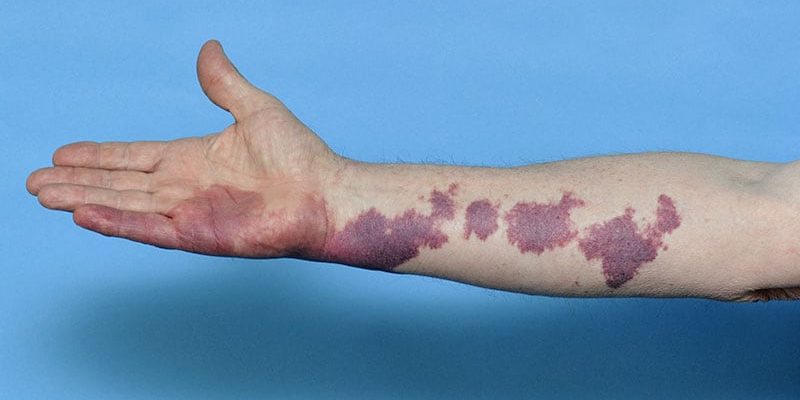TOPLINE:
The large-spot novel-generation pulsed dye laser achieved a 50% improvement in port-wine birthmarks (PWBs), with about half as many treatments compared with the prior-generation pulsed dye laser.
METHODOLOGY:
-
Researchers at two high-volume laster practices restrospectively reviewed the charts of 160 patients with PWBs whose mean age was 21 years at the first treatment.
-
Of the 160 patients, 80 were treated with a prior-generation pulsed dye laser (PPDL) (Vbeam Perfecta; Candela), whereas 80 were treated with the larger-spot novel-generation pulsed dye laster (NPDL) (Vbeam Prima; Candela).
-
Two blinded graders evaluated baseline clinical photos and posttreatment photos after the last assessed treatment and used a visual analog scale for PWB improvement that ranged from 1 (0%-25% improvement) to 5 (complete, 100% improvement).
-
The primary outcome was the number of treatments needed to achieve a minimum of 50% improvement of the lesion.
TAKEAWAY:
-
NPDL use was associated with a mean maximum spot size of 13.1 mm and mean maximum fluence of 7.3 J/cm2, with pulse durations of 0.45-3 ms.
-
PPDL use was associated with a mean spot size of 10.8 mm and mean maximum fluence of 8.8 J/cm2, with pulse durations of 0.45-6 ms.
-
The researchers observed a 50% improvement in PWBs, with a mean of 8.8 PPDL treatments compared with a mean of 4.3 NPDL treatments (P ≤ .01).
-
On regression analysis, device type was the statistically significant independent variable associated with the endpoint of at least 50% improvement of the birthmark.
IN PRACTICE:
-
Although the researchers reviewed charts from two high-volume laser practices, they acknowledged that “future collaboration with other providers would further explore the reproducibility of these results.”
STUDY DETAILS:
-
Pooja Sodha, MD, director of the Center for Laser and Cosmetic Dermatology at George Washington University, Washington, DC, led the research. The study was published online in Lasers in Surgery and Medicine on June 9, 2023.
LIMITATIONS:
-
The study lacked an adequate sample size to provide subgroup analysis by age, location, and laser parameters for the assessment of further differences between NPDL and PPDL outcomes.
DISCLOSURES:
-
Two of the study authors, Paul M. Friedman, MD, and Roy G. Geronemus, MD, serve on the Candela Medical Advisory Board.
For more news, follow Medscape on Facebook, Twitter, Instagram, and YouTube
Source: Read Full Article
